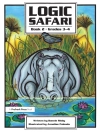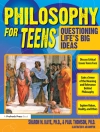Essential radical texts by enslaved, jailed, and imprisoned Americans, edited by renowned political prisoner Mumia Abu-Jamal and activist-scholar Jennifer Black.
“Filled with insight and energy, this extraordinary book gifts us the opportunity to encounter people’s understanding of the fight for freedom from the inside out.” —Ruth Wilson Gilmore, author of Golden Gulag and Abolition Geography
“Martin Luther King told us what he saw when he went to the mountaintop….But there’s also the foot of the mountain, and there are also the regions beneath the surface. I want to try to tell you a little something about those regions.” —Angela Y. Davis, author of Angela Davis: An Autobiography
Beneath the Mountain is a reader’s guide for understanding the evolution of anti-prison tenets. This essential core of primary texts provides an arc of insurgent writings by dissidents and revolutionaries who experienced incarceration and state terror first-hand. With contributions from John Brown, Frederick Douglass, and Crazy Horse, to Assata Shakur, Malcolm X, and Leonard Peltier, it also includes a previously unpublished communiqué from Angela Davis, written from jail at the time when she was forging the anti-prison critique that has since inspired a national movement.
Beneath the Mountain offers a record of the historic foundations for the contemporary abolition movement. What emerges from these texts is an emancipatory vision that inspires the work being done today, a vision centered on organizing and solidarity as an antidote to repression. An invaluable resource for readers on both sides of prison walls, this compendium of resistance and hard-won vision will be essential to all who seek to develop an abolitionist critique and to further an understanding of the nature of repression and liberation.
विषयसूची
BENEATH THE MOUNTAIN
AN ANTI-PRISON READER
Edited by Mumia Abu-Jamal and Jennifer Black
ANNOTATED TABLE OF CONTENTS
Introduction Chapter 1: Oney Judge, Response to George and Martha Washington, Her Enslavers
Oney Judge’s successful self-emancipation and succinct response to her enslavers reflect a profound understanding of the importance of autonomy and self-determination in the fight for freedom.
Bio: Oney Judge was born into servitude in 1774 at George and Martha Washington’s plantation in Mount Vernon, Virginia. Her mother was an enslaved seamstress and her father was a white Englishman. Oney self-emancipated at age 22. In 1848, she died a free woman in Portsmouth, New Hampshire.
Chapter 2: Nat Turner’s Confession
Nat Turner’s stark reflection outlines the circumstances and foundational inequities that inspired him to execute a massive insurrection against slavery.
Bio: Nat Turner lived and died in the state of Virginia from 1800 to 1831. Despite being enslaved, Turner learned how to read and write from the son of one of his masters. At 21 years old, Turner escaped slavery and remained at large for a month before voluntarily returning after receiving a religious sign. He spent the next 10 years planning the largest and bloodiest three-day slave revolt in United States history. He was apprehended and hanged for his role in the uprising.
Chapter 3: John Brown Letter
In his final letter to his family before his death, John Brown comforts his loved ones and remains steadfast in his view that the lengths he went to end slavery were justified.
Bio: John Brown was born in Connecticut in 1800 to an anti-slavery religious family. A conductor on the Underground Railroad, Brown founded the League of Gileadites, an organization that aided self-emancipated people on their path to Canada. In 1959, following an unsuccessful raid on Harpers Ferry in what is now West Virginia, Brown was caught, tried, and executed for inciting a slave insurrection and other crimes.
Chapter 4: Frederick Douglass, “The Run-Away Plot” from My Bondage and My Freedom
Frederick Douglass details the excruciating psychological torture of slavery, and the terrifying circumstances of being apprehended and imprisoned for trying to escape to freedom.
Bio: Frederick Douglass was born into slavery in 1818 in Talbot County, Maryland. When he was 20 years old, he successfully self-emancipated by obtaining false papers that allowed him to pose as a free Black sailor. He made his way to Philadelphia, where he was met by abolitionist friends who helped him reach New York. A towering figure in the abolitionist movement, Douglass was a brilliant orator, writer, thinker, organizer, and statesman. In 1895, he died in Washington, D.C.
Chapter 5: Crazy Horse Speech
While dying, Crazy Horse reflects that his only crime was being an Indian and living like one.
Bio: Crazy Horse was a legendary warrior and leader of the Oglala Lakota Tribe. He fought against the US government’s attempts to displace and subjugate Native people and is best known for fighting in the 1876 Battle of the Little Bighorn. Crazy Horse was mortally wounded by bayonet when he allegedly resisted imprisonment at Camp Robinson. It is said that he never signed a treaty.
Chapter 6: Eugene Debs, “Prison Labor, Its Effect on Industry and Trade”
Eugene Debs analyzes why prison labor emboldens and supports prison profiteers while it impoverishes and weakens its workers.
Bio: Born in 1855, Debs began working at age 14, scrubbing paint and grease off railroad cars for 50 cents a day. Debs became a socialist after observing the two-party system’s ruthless support of industrial interests. Imprisoned twice for his political activities, his final campaign for presidency was conducted from a jail cell. Although no known recording of Debs’ voice exists, his oratory powers were said to be legendary. He died in 1926.
Chapter 7: Geronimo, “In Prison and on the Warpath” from Geronimo’s Story of His Life
Geronimo describes being displaced by the United States and the role of incarceration and confinement in the process of settler-colonialism.
Bio: Geronimo was estimated to be born in 1829 in present-day Arizona. A member of the Chiricahua Apache people, he gained esteem fighting against both Mexico and the United States. Known by his supporters as a warrior and medicine man, he was believed to have supernatural powers of healing, time manipulation, weather control, and prescience. Forcibly restricted to the San Carlos Reservation, Geronimo and his supporters escaped three separate times before they finally surrendered. He was the last Indian leader to formally surrender to the United States military and spent the final 23 years of his life as a prisoner of war. He died of pneumonia in 1909.
Chapter 8: Mother Jones, “Early Years, ” “The Haymarket Tragedy, ” and “In Rockefeller’s Prison, ” from Autobiography of Mother Jones
Mother Jones’s narration of her life story highlights the circumstances that led to the rise of workers’ struggles in the United States and the roles of state terror and incarceration as methods of social control.
Bio: Known best as “Mother Jones, ” Maåy Harris Jones was born in Ireland in 1837 and immigrated to Canada with her family to escape famine. A fiery orator and storyteller, she utilized dramatic speech and street theater to draw attention to the gap between obscene wealth and devastating poverty. Mother Jones was at one point considered the most dangerous woman in America. She died in 1930.
Chapter 9: Nicola Sacco Letter
Nicola Sacco’s final letter implores his teenage son to choose solidarity and love in the face of terror and viciousness.
Bio: Nicola Sacco emigrated to the United States from Italy when he was 17, where he became an active member of an anarchist group. In 1920, Sacco and Bartolomeo Vanzetti were charged with the murder of a paymaster and a guard during a robbery at a shoe factory. Their trial became an international cause célèbre, as many believed that there was no concrete evidence against them and that they were soley persecuted for their political beliefs. Despite widespread protests and appeals, they were convicted and sentenced to death in 1921.
Chapter 10: Angelo Herndon, “You Cannot Kill the Working Class”
Angelo Herndon uses his life story to illustrate how the legacy of slavery contributes to contemporary inequality, and calls upon workers to unite together against racism and capitalism.
Bio: Born in 1913 in Ohio, Angelo Herndon was a Black labor organizer, Communist Party member, and civil rights activist. As a 13-year-old laborer in a coal mine, his experience of poor working conditions influenced his decision to join the Young Communist League USA in 1930. In July 1932, he was arrested for organizing a march to Georgia’s state capitol to petition for unemployment insurance. His crime of “inciting an insurrection” was based on a rarely invoked 1861 Georgia state law intended to prevent slave revolts. Convicted and sentenced to 18 to 20 years in a chain gang, Herndon’s case highlights the racial and political tensions in the South, and the challenges to the rights of free speech. He died in 1997.
Chapter 11: Ethel and Julius Rosenberg, Letters
The human cost of political persecution is revealed in this set of personal letters sent between Ethel and Julius Rosenberg and their peers.
Bios: Ethel Greenglass was born in the state of New York in 1915. Julius Rosenberg was born three years later. Active members of the Communist Party, they married in 1939. Arrested in 1950, the couple was accused of turning over military secrets about the atomic bomb and nuclear weapons to the Soviet Union’s vice-consul. Despite an international campaign to free them, they were incarcerated for three years and then executed. The Rosenberg’s were the first American civilians to receive the death penalty for the crime of conspiracy to commit espionage.
Chapter 12: Malcolm X, “Saved” from The Autobiography of Malcolm X
Malcolm X describes his extraordinary self-education in prison and reveals that the study of history transformed the course of his life.
Bio: Malcolm X was born Malcolm Little in 1925 in Omaha, Nebraska. Following a jailhouse conversion to Islam, he was later referred to as el-Hajj Malik el-Shabazz. Malcom X was a remarkable orator and dedicated his life to studying history, organizing, preaching, and confronting white supremacy. At 39 years old, Malcolm X died from a hail of bullets in the Audubon Ballroom, in Washington Heights, New York. His work remains an inspiration to Black liberation movements around the world.
Chapter 13: George Jackson, Jail Letters, and excerpt from Blood in My Eye
George Jackson’s letters from jail demonstrate his personal view of his plight in the scope of historical circumstances, and outline the ways the anti-prison movement is connected to all movements for social justice.
Bio: George Jackson’s life began in Chicago in 1941 and ended in San Quentin Prison in 1971. One of five children, Jackson spent time in juvenile corrections for various charges. At the age of 18, Jackson was given an indeterminate “one year to life” sentence for stealing $70 from a gas station. Jackson was politicized by other prisoners and read voraciously, dedicating himself to revolutionary studies. In 1971, Jackson was shot and killed by prison guards who claimed he was trying to escape. His writings and life story have become foundational to the development of anti-prison theory.
Chapter 14: Angela Davis, 1971 Jail Letter and “Beneath the Mountain” Victory Speech
Speaking and writing with revolutionary passion, Davis connects the dots between militarism, capitalism, the prison system, and the role of state terror in maintaining the status quo. These pieces reveal some of the earliest iterations of her abolitionist critique.
Bio: Angela Davis was born in Birmingham, Alabama, in 1944. Davis came of age witnessing racial terror as part of the everyday life of Black people living in the South. She became a member of the Communist Party and was closely affiliated with the Black Communist group the Che-Lumumba Club. She rose to national and international prominence when accused of involvement in a California courtroom shootout that resulted in four deaths. After more than a year in prison and a trial, she was acquitted in 1972, and returned to teaching. A leader in anti-prison organizing, she has since held faculty positions at several universities, and continues to give public talks and write to advance radical feminism and abolitionism. She resides in Oakland, California.
Chapter 15: Martin Sostre, “The New Prisoner”
Martin Sostre presents an in-the-trenches appraisal of the mindset of politicized prisoners.
Bio: Born in Harlem, New York, in 1923, Martin Sostre went to prison on drug charges and survived nearly 20 years of incarceration, much of it in solitary confinement. He served time throughout the state of New York in various facilities, and became politicized there by studying law, history, and philosophy, thus developing a staunch anti-prison consciousness. Known as a rabble rouser and organizer, he also became a revolutionary anarchist who used his knowledge to wage and win legal battles for prisoner rights. Upon release from prison, he opened a radical bookstore in Buffalo, New York. Sostre went to prison again in 1967 on trumped-up drug charges, spending 10 years there before winning his freedom. He died in 2015.
Chapter 16: Assata Shakur, “How It Is With Us” and poems
Assata Shakur discusses women’s prisons and emphasizes how incarceration wastes human potential.
Bio: Assata Shakur was born Jo Anne Byron in 1947 in Jamaica, Queens. She spent her childhood years in both New York City and Wilmington, North Carolina. Involved in Civil Rights and Black Power movements, Shakur joined the Black Panthers and later the Black Liberation Army. In 1973, she was ambushed by police on the New Jersey Turnpike, and despite lack of evidence, was convicted and sentenced to life in prison for the murder of a state trooper. She escaped prison in 1979 and made her way to Cuba. Granted political asylum, she continues to live, work, and teach there today, forced to remain in exile due to the bounty the United States government has placed on her head.
Chapter 17: Rita Bo Brown, Court Statement
Rita Bo Brown’s unyielding and steadfast court statement emphasizes the importance of solidarity between marginalized groups and the anti-prison movement.
Bio: Rita Darling Brown, popularly known as Bo Brown, was born in rural Oregon. A community-minded, working-class lesbian, she gained notoriety for the polite and calm manner in which she robbed banks. After serving eight years in prison, she returned to her radical community where she was known as a committed and well-loved advocate for prison abolition and economic and racial justice. Brown died in 2021 in Oakland, California.
Chapter 18: Mumia Abu-Jamal *****Unpublished piece not yet determined******
Bio: Born in 1954 in Philadelphia, Mumia Abu-Jamal’s career started at age of 14 when he joined the Black Panther Party. By age 15 he had his own byline in the weekly Party paper and an international readership of 250, 000. Abu-Jamal’s broadcast career was sharply altered after his wrongful arrest in 1981. He was found guilty of premeditated murder and sentenced to death. After decades on Death Row, his sentence was commuted to life in prison. Abu-Jamal continues to research, record, write, and publish while living in SCI Mahanoy in Frackville, Pennsylvania.
Chapter 19: Safiya Bukhari, “Coming of Age: A Black Revolutionary” from The War Before
Safiya Bukhari describes how she became a revolutionary, and advocates that as long as circumstances of repression exist, people are obligated to rise up and fight back.
Bio: Born in Harlem, New York, in 1950, Safiya Bukhari joined the Black Panther Party in 1969. Both a witness and a victim to the state terror leveled against activists, she was imprisoned from 1975 to 1983 on robbery and murder charges. Once released, she went on to co-found and co-chair the New York Free Mumia Abu-Jamal Coalition and the National Jericho Movement for US Political Prisoners and Prisoners of War, and became vice-president of the Republik of New Afrika. Known as a fierce and tirelessly hardworking advocate, she addressed issues pertaining to women prisoners and medical neglect. She died in 2003, in Manhasset, New York, at the age of 53.
Chapter 20: Todd Ashker, Arturo Castellanos, Sitawa Nantambu Jamaa, California Hunger Striker Statement, Agreement to End Hostilities
Paving the way for their planned hunger strike, this statement signals to their outside support networks, as well as to fellow prisoners, that a united racial front is imperative to their success.
Bio: TK
Chapter 21: Chelsea Manning, Court Statement
Writing from prison, Chelsea Manning describes why she was forced to become a whistleblower, and details the facts of her life in relation to her growing understanding of US war crimes in Iraq and Afghanistan.
Bio: Chelsea Manning was born in 1987 and grew up between the United States and her mother’s home country, Wales. She joined the United States Army in 2007, became a whistleblower by exposing military information on Wiki Leaks, and was subsequently arrested. In 2013, Manning was found guilty of espionage and theft and sentenced to 35 years in prison. The following month, Manning came out as transgender. Manning served seven years in a military prison until 2017, when her sentence was commuted by President Barack Obama. Manning went back to prison two times in 2019 when she was found in contempt of court for refusing to testify in a Wiki Leaks inquiry, and was released in 2020. She currently lives in Brooklyn, New York.
Chapter 22: Russell “Maroon” Shoatz, “Liberation or Gangsterism”
Writing from prison, Russell “Maroon” Shoatz provides a stark analysis of how and why a generation of youth have become victims of mass incarceration.
Bio: Russel “Maroon” Shoatz was born in 1943. A self-proclaimed “street thug, ” Shoatz spent time in and out of juvenile prison facilities. He became a founding member of the Black Unity Council and was a soldier in the Black Liberation Army. In 1973, he was convicted in connection with the murder of a Philadelphia police officer and sentenced to life in prison with no possibility of parole. Following two prison escapes, Shoatz was subjected to 22 consecutive years in solitary confinement, and was later released into the general population after a successful court battle. Having secured compassionate release from prison, he enjoyed 53 days of freedom and died in Philadelphia in 2021.
Chapter 23: Free Alabama Movement Collective, “Let the Crops Rot in the Field”
This statement discusses the power of prisoners to organize and the significance of understanding political economy.
Bio: TK
Chapter 24: Ed Mead, “Men Against Sexism and Escape”
Ed Mead discusses prison organizing, safety, and the importance of solidarity.
Bio: Born in 1941, Ed Mead was 13 when first incarcerated in Utah. Mead went from being a swindler and petty criminal to a politicized anti-prison activist, and became a founder of the George Jackson Brigade, an underground revolutionary group. He served 18 years in prison for bank robberies and attacks against government targets such as the Washington Department of Corrections, Bureau of Indian Affairs, and the FBI. Mead currently lives in Seattle, Washington, and continues to organize and conduct community work.
Chapter 25: Saleem Holbrook, “Dismantling the Master’s House”
Saleem Holbrook reflects on the ways radical Black and abolitionist traditions provide necessary tools to gain liberation from prison and discusses what tools are necessary for greater societal change outside of prison.
Bio: Saleem Holbrook was born and raised in Philadelphia. The son of politically active parents, Holbrook came of age in the “tough on crime” era of mass incarceration. On the night of his 16th birthday, Holbrook was convicted of first-degree murder for playing the role of lookout in a drug deal gone bad and was sentenced to life in prison with no possibility of parole. While incarcerated, he wrote extensively on prison abuse and state violence and helped co-found the Human Rights Coalition and the Coalition Against Death By Incarceration. He currently resides in Philadelphia, where he serves as executive director of the Abolitionist Law Center.
Chapter 26: Safear Ness, “Phone Resistance”
In this hopeful account, Safear Ness provides the anatomy of a successful campaign for phone usage in the Pennsylvania prison system.
Bio: Safear Ness was born in 1991 and raised in Philadelphia. Ness came to political consciousness during the Occupy movement and went to prison shortly afterwards. Mentored in prison by Steven Wilson and others, Ness was released in early 2023. He currently lives, studies, writes and organizes at the State College, Pennsylvania, where he produces “In The Mix: Prisoner Podcast.”
Permissions
Acknowledgments
About the Editors
Index
लेखक के बारे में
Mumia Abu-Jamal is a writer, broadcast journalist, and internationally recognized human rights activist. The author of thirteen books, Abu-Jamal holds a Master’s degree in Comparative Literature and is currently working on his Ph D in the History of Consciousness Department at University of California Santa Cruz. He is a political prisoner serving a life sentence, incarcerated at SCI Mahoney State Prison, Frackville, PA.
Jennifer Black holds a Ph D in Comparative Studies from The Ohio State University where she taught for 12 years. Her research focuses on high-risk activism, state terror, criminal injustice, mass incarceration, and social movement theory. Black hails from a background in both academia and activism and has been collaborating on these two fronts with Abu-Jamal since 1993. She is based in State College, PA.












